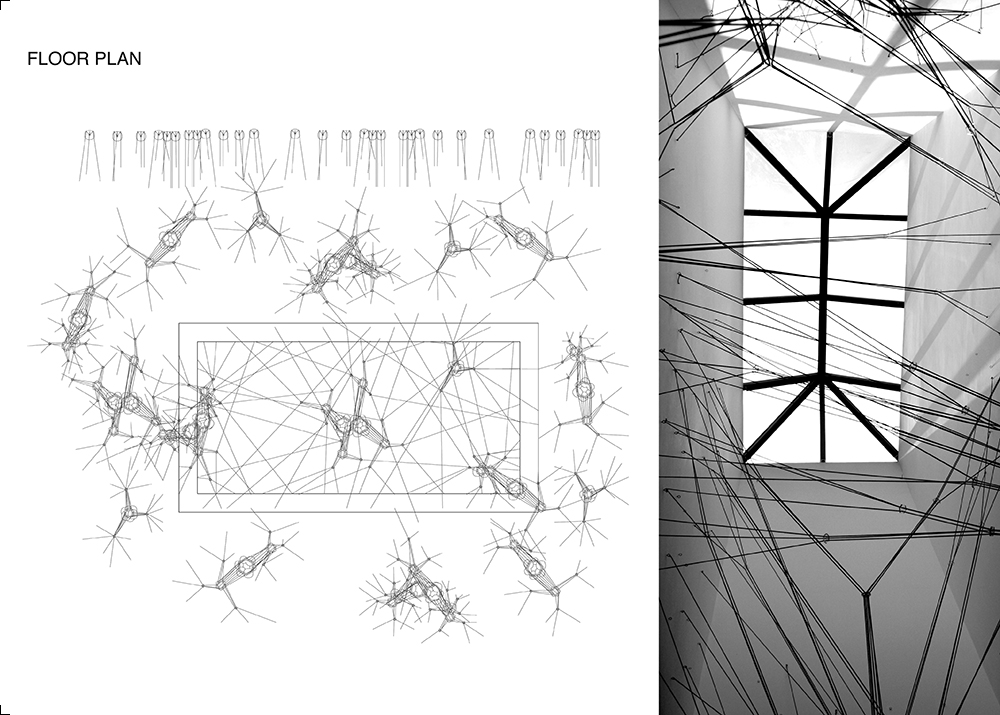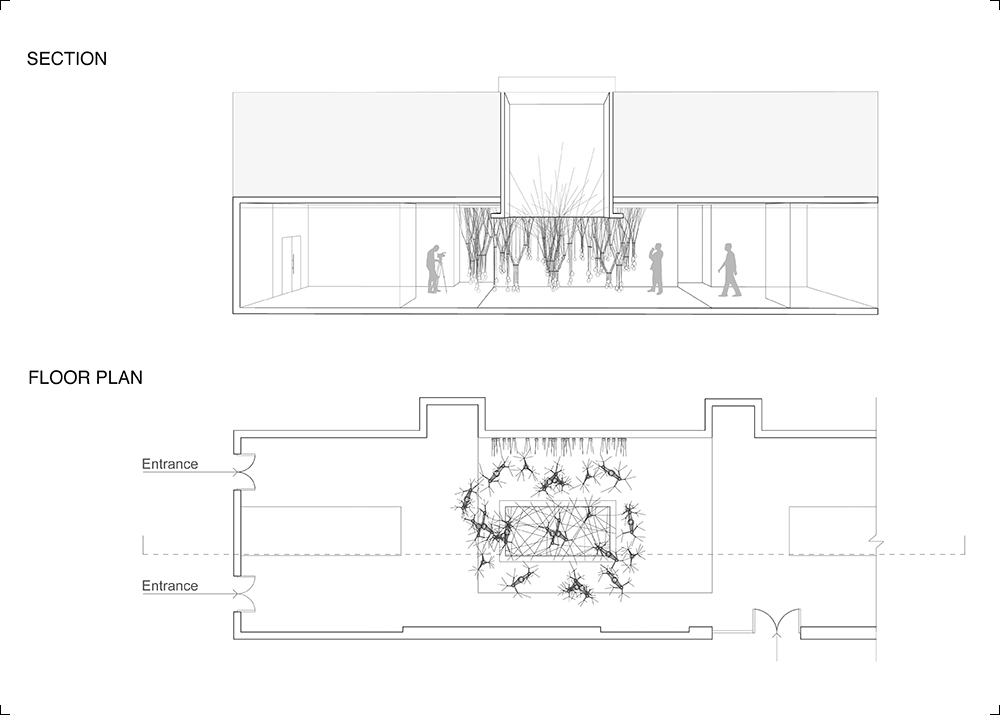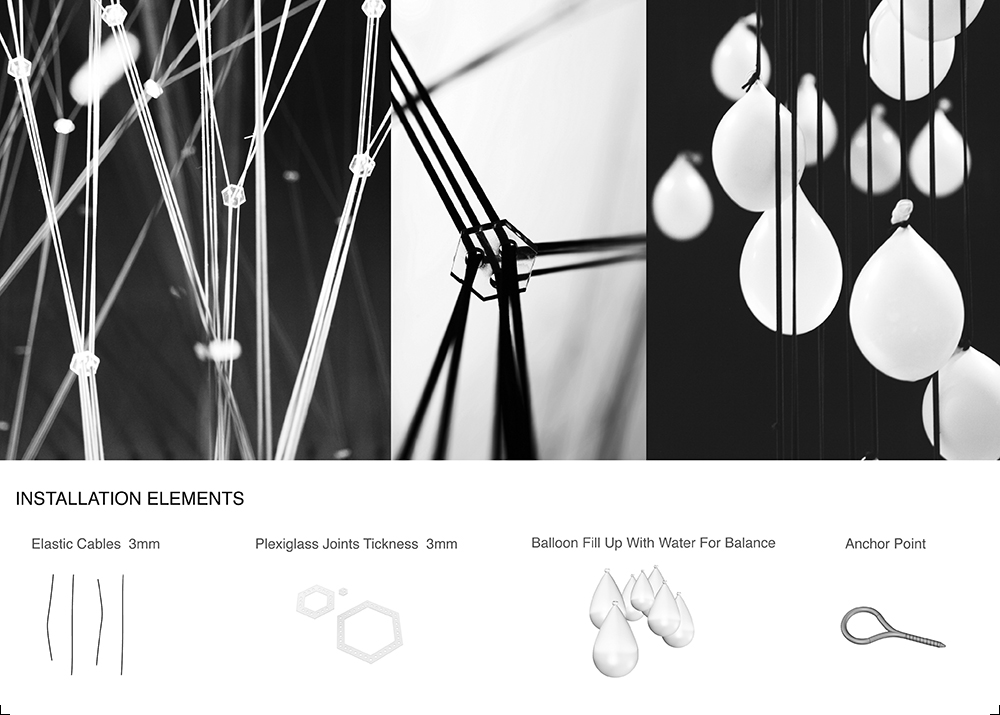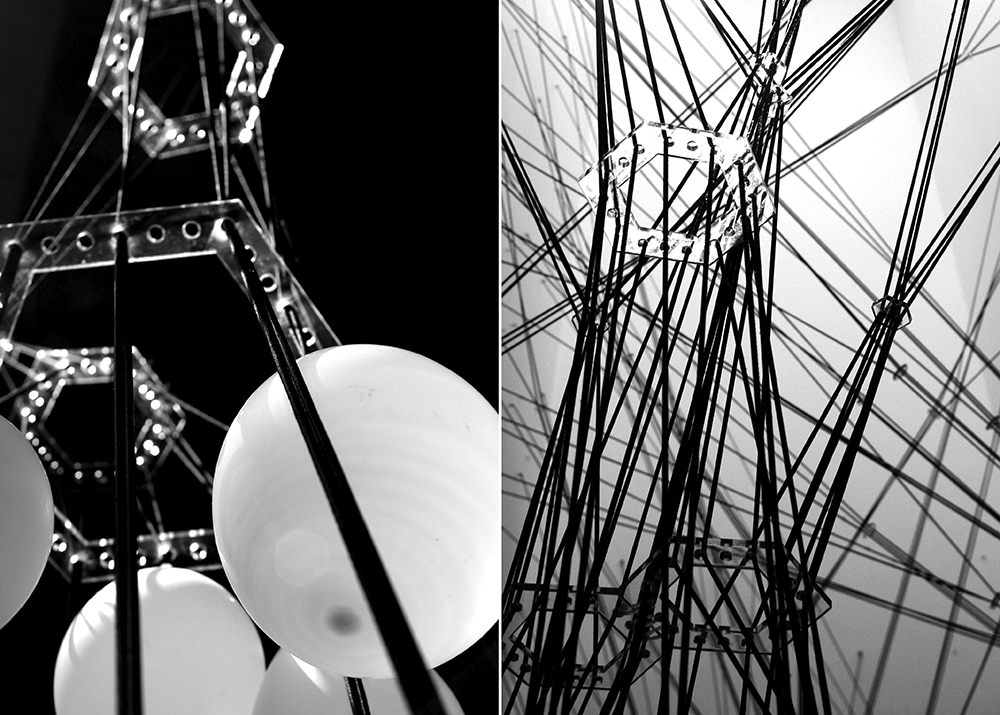branching tensions
Year: 2013
Size: 60 m2
Type: installation
Status: completed
Location: Beijing, China
Client: Tsinghua Fine Art School
Partners in charge: Federico Ruberto, Nicola Saladino
Design team: Martina Muratori, Luca Lotumolo, Lan Bai, Jing Chen, Yun Chen, Yi Liu, Xiaojing Meng, Wei Song, Qianqian Zhao (students of the 4th year Interior Design program)
External collaborator: Eva Castro (visiting professor)
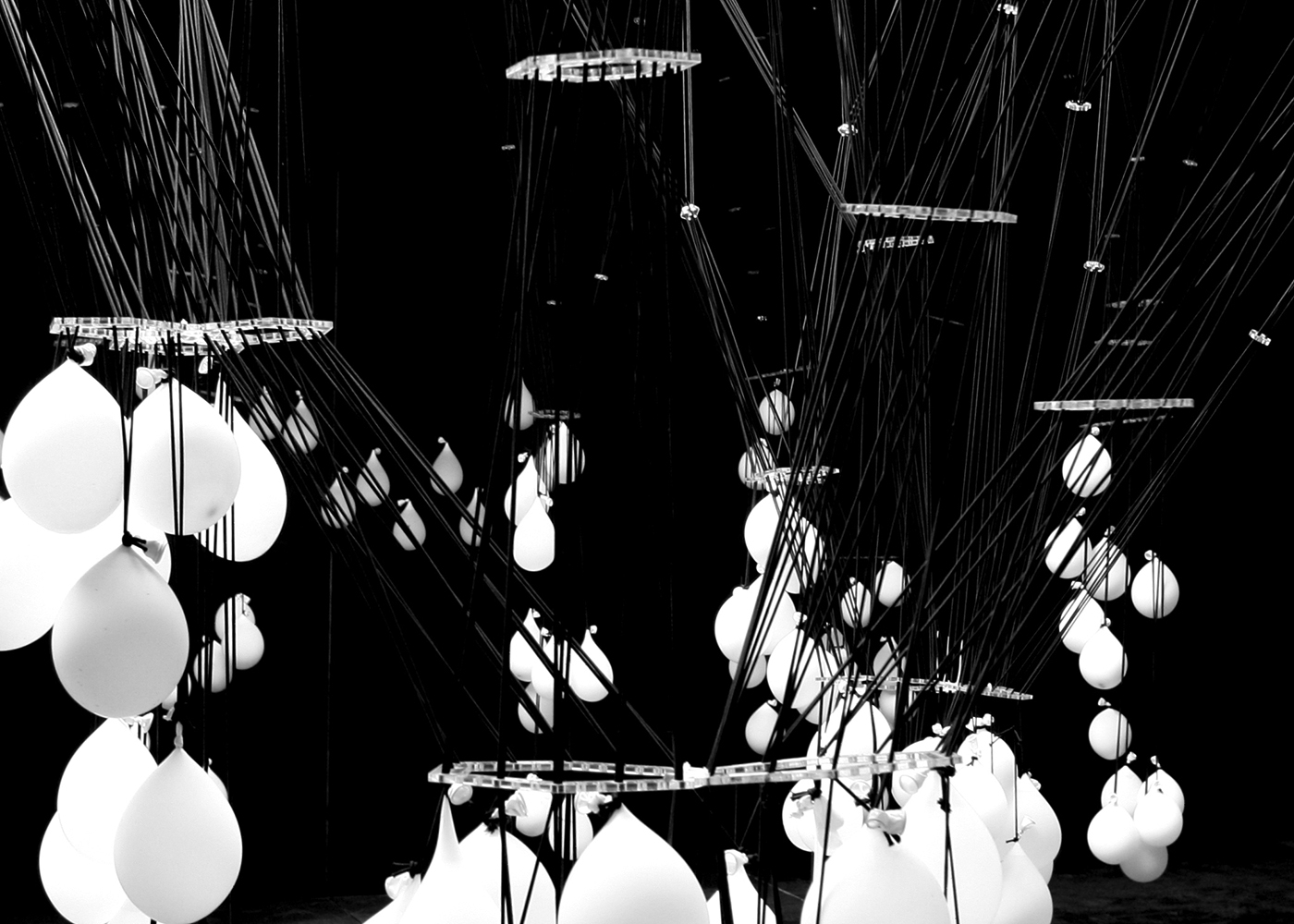
This installation is the result of a workshop with students from Tsinghua Academy of Fine Arts. It comes from the understanding of design not in an aprioristic manner but as a process-based framework in which various logical operations and the performance of the different components characterize the aesthetic and emergent properties of the resulting space. We proposed a strategy in which the final shape was not given and predetermined from the beginning but was generated as a result of an “organic” construction process.
The main design elements are: hexagons of three types and scales that determine different geometric formations, elastic cables that link the connectors and balloons filled-up with water that help achieve the final tensional stability. The intervention is a tactic of punctual decisions: the design of few basic components, their location through connectors and their balancing logic once assembled together create a dynamic spatial organization that is open to further on-site alterations. The interplay of these three actors and the complex dynamic stability that is generated offers the possibility of literally playing on site allowing the students to interact, discuss and mediate altogether in the creation of their singular constellations. The trees reach a stable condition only when the final weight is applied at the bottom. Thus the operation of linking different formations together modifies the system overall balance, altering and affecting the position of every other single branch.
该装置由我们带领清华大学美术学院学生合作完成。这次设计中我们反思通过演绎推导预设结果的传统设计思维,而探索通过设立一定的逻辑框架来控制设计过程本身的策略:设计中不同元素的操作逻辑,功能特征,共同以自下而上的方式决定了最终形成的空间的美学特性的“涌现”。因而,该装置的最终形态不是经过预设而决定的,而是经过“有机”建造所产生的结果。
该设计的主要原理是:用三种不同形态和尺寸的六边形作为连结构件来形成装置各部分不同的几何结构,将具有弹性的缆绳连接六边形构件与下端悬挂的气球,最终利用灌满水的气球引发的缆绳张力而获得整体结构的稳定性。设计过程涉及到一系列关键而精确的细部设计:基础构件本身及其位置的设计,使它们相互之间获得平衡,并共同创造出一个动态的空间组织关系。这个空间组织还可被进一步改变以适应不同的场地条件。三样构件之间的相互作用产生的复杂的动态稳定性,使学生们在现场和装置的互动成为可能,他们可以一边讨论一边摆出各自的奇特想法。只有最后当所有重量施加在底部时,树状结构才能达到稳定的状态。因此,移动结构的任意部分,都会牵一发而动全身,更改整个系统的平衡,形成一个新的形态。
